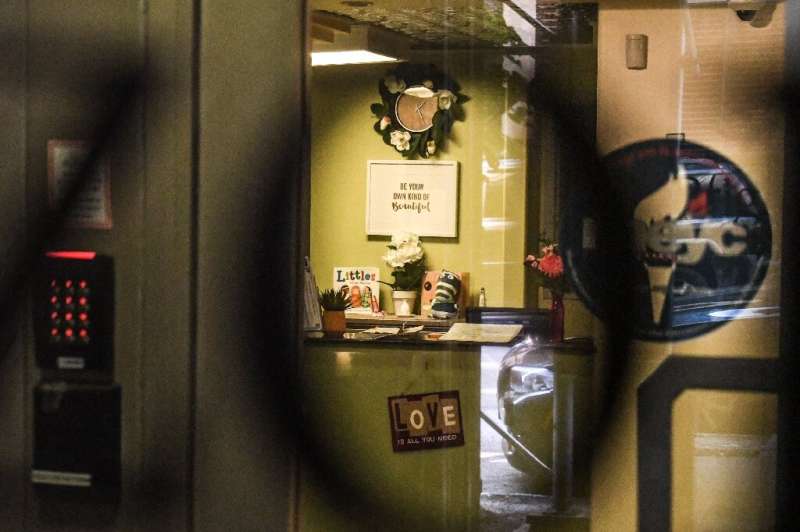A closed day care center is seen on July 13, 2020 in the Brooklyn borough of New York City
Rhode Island, the smallest US state, was able to reopen day care programs in the summer without high rates of coronavirus spread, a study said Friday.
Robert Redfield, director of the Centers for Disease Control and Prevention which wrote the study, held it up as an example that could be replicated across the country.
"I think this is an inspiring article to tell individuals that there is a path where one can use or partner with their public health authorities and safely get these childcare programs reopened," he said in a call to reporters.
A total of 666 out of 891 childcare programs, both center- and home-based, reopened in Rhode Island on June 1 following a significant decline in cases and hospitalizations in the state.
Officials imposed measures like universal masking for adults, daily symptom screening for everyone, routine disinfection, reduced class sizes (first up to 12, and later 20), and maintaining stable bubbles of staff and children.
The programs also had to conform to strict quarantining and contact tracing measures if an outbreak occurred.
An important caveat is that while the report said these programs had a capacity for 18,945 children, it is not known how many children actually attended over the period studied.
The CDC told AFP in a statement that the number of children who attended had not been tracked, making the overall significance of the findings harder to gauge.
Between June 1 and July 31, 52 cases—either confirmed or probable—were reported from a total of 29 programs.
Among them, 20 programs had one case, and five programs had between two to five cases—all thought to have come from outside the programs.
In total, four of the 666 programs saw "secondary" transmission—that is to say an infection or infections that occurred within the center itself.
These happened either when adults moved between classes, contrary to the directives, or when children infected other children in the same group.
Despite the relatively low number of cases, their impact was still substantial: In total, 89 classes were shut down and 853 staff and children had to quarantine for 14 days.
The state has a population of just over one million and is split into five counties.
One of these is experiencing 11 new cases per 100,000 people, making it an orange zone according to metrics devised by Harvard.
The rest are seeing between one and 10 cases per 100,000 and are therefore yellow.
The university recommends districts with 25 cases per 100,000 or above, that is to say red zones, should not reopen learning facilities until bringing community transmission levels down.
© 2020 AFP
























